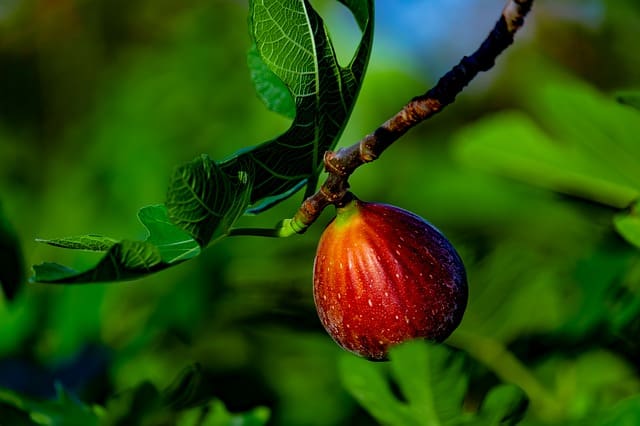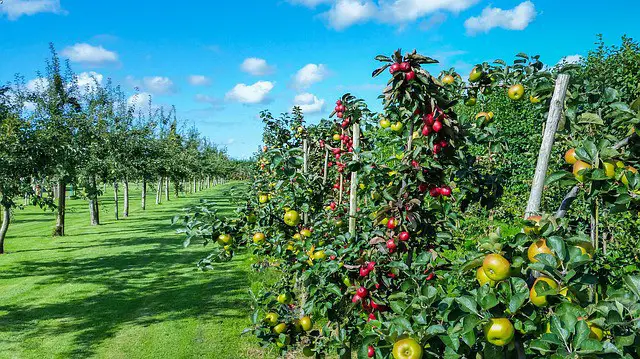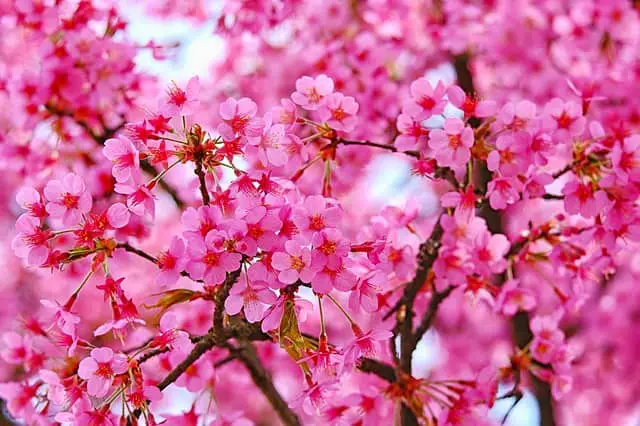
Being able to raise fruit on your own homestead is very rewarding, but to make sure your fruit trees get off to a good start, you’ll have to follow the rules Mother Nature has handed down.
The Agriculture Zone where you are located directly affects the time of year that you will want to plant. Southern Growers will be better served to plant fruit trees in the fall, while some Northern growers will plant fruit trees in the spring.
Let’s take a look at the planting dates that are best for you, and some tips that will get your fruit trees off to a great start in the spring!
Know Your Agricultural Zone
If you’ve been gardening very long you know that your location (the Zone you are in) can dictate many of your gardening habits. What you plant, how you plant, where you plant and when you plant are questions you have to answer before you get started. Well, raising fruit is no different.
The Bad Ol’ Summer Time
Summer is a terrible time to plant fruit trees. Terrible. I have a nursery near me that closes the entire month of August. I asked them once if it was because business dried up during August. They said that was part of it, that business was definitely less in the hottest part of the summer (here in Texas), but that folks still bought trees, and planted them then. I said, “but that’s a horrible time to plant trees!” He just shrugged his shoulders and said “yep”.
Transplanting a tree from a pot (and even more so a bare rooted tree) is very stressful for the plant. There are so many negative factors that can affect the tree for the rest of its life. Forcing the tree to start life on your property under stress is just not a good idea, and the tree will probably penalize you for causation.
Even if you are in a colder Zone planting in the summer is never a good idea. The tree just needs more time to settle in before summer begins to bring its heat. I know, y’all don’t get as hot up north as we do in the south, but sometimes nature plays a little trick and sends you into the high 90’s too, or even triple digits. It’s just not worth the risk.
So, if you are in Zone 7A or colder, you should plant in the spring. When the ground thaws out (we don’t have that problem here in Zone 8) you should be good to go. The tree will almost assuredly be dormant, especially if it’s from a nursery close to you.
Planting in the spring for cold climates is even more critical if you’re planting a bare-root tree. Bare root trees don’t have much of a root system. Actually, they are not much more than a stick. Therefore, bare-root trees will have a harder time “taking hold” and starting the growing process than a “potted tree”.
That’s one reason I strongly suggest planting the biggest tree, in the biggest pot you can possibly afford. This article explains the logic behind that suggestion (I wish I could make it an order, but I can’t), and your trees should do better if you can follow the guidance I share.
If you are in Zones 8 and further into the south, you can and should plant in the fall. Yes, you can plant in the spring, but your trees will do so much better if planted in the late fall.
A general rule of thumb is, if your ground usually freezes by Thanksgiving, you should plant in the spring. If it freezes well after that, or as is the case in most of the south, if it doesn’t freeze at all, you should plant in the fall.
Root System Growth
The roots on the tree need to “settle in” and take hold before the summer heat. Planting in fall will allow the new soil to pack around them and seal them up from the air. Air is an enemy of roots. Roots exposed to air will do something called “air prune”. That means they will stop growing at that point. They will (for lack of a better word) self-cauterize their root ends and stop growing at that point.
A good root system is the heart and lifeblood of the tree, so the more roots are vigorously growing, and the longer the roots are getting, the better-off the tree will be. This can affect the tree for its entire life.

For that reason, when a tree is planted (in the correct season for the Agricultural Zone you are in) you should water it in well. That will seal the soil around the roots and prevent any air from reaching them. Make sure you water your new tree in well, no matter when you plant it.
Also, if southerners’ plant in the spring there is a chance of getting an early summer. Almost every year when we are coming out of winter (which would seem very mild to you northerners) we seem to go straight into summer. I mean, we will have cold temperatures, then Bam… It’s 90 degrees!
If a tree was planted in spring it might only have a month or so to settle in before the stress of summer heat begins to test its resolve. I’ve seen it over and over. And I’ve even lost a few trees to the “spring planting” method before I got wise to the problems associated with planting at that time of year.
If you’re in the south, or even a little farther north, in one of the Zones described above, and your ground is still workable at Thanksgiving, plant in the fall. You’ll be glad you did.
Fall Water Requirements
If, as described above, a tree is planted in the spring, it will need more attention to its moisture. Especially if spring turns into summer quickly, the tree will need a lot more attention in regard to a watering schedule.
For this reason, I would advise installing some type of irrigation system when the new trees are planted. This can be a very simple thing to do. I show just how simple it is in this video:
If a tree is planted in the fall, the changing season usually brings with it more natural moisture anyway. Rain. Yes, you’ll still have to make sure you water it in well when you plant it, but after that, the only watering needed would be if there is a distinct absence of rainfall. It happens but is not common. We normally get a lot of rain during the fall and winter months. For that reason, watering the tree is usually not necessary, if the tree is planted in the fall.
Problems Associated With Fall Planting
Rodents and Rabbits: As the winter begins to show itself, so does the “hunker down” instinct of the animal world. Certain rodents and rabbits will try to find a quick “buffet” to will tide them over in the coming months of deprivation. For that reason, planting in the fall could mean there is more of a chance of damage to freshly planted trees by critters.
For that reason, a newly planted tree should be protected from any damage that a hungry critter might inflict on it. Unfortunately, this might be even more important for a fall-planted tree. They might be more likely to chew on a tree during the winter than they would when things are starting to green up in the spring. Their “buffet” expands quite a bit when spring comes.
So make sure (whether a fall or spring planting) to protect your trees with something like a Tree Guard. It would be a shame to wait all winter expecting the tree to respond to the warming spring temperatures, only to find it has been damaged by rodents or rabbits. You’ve got too much time and money invested in it. Install some sort of protection to dissuade the critters from chewing the trunk.
The Deer Population: Deer damage can occur at any time of the year, but it might be more prevalent in the fall and winter months. Bucks like to rub their antlers on the base of trees to mark their territorial lines. Since he is marking his territory, he may repeat the “rub” several times.
If your trees are young, especially if they were newly planted in the fall, a deer can really damage the tree. He could rub all the bark off the tree, which could kill it, but will for sure damage its long-term growth possibilities.
Deer will also eat trees. If they are young, the chewing by the deer can damage the tree, or can at the least reshape the tree in ways you don’t really want. A deer’s pruning methods will not match an arborist’s pruning method. We’ll talk about pruning later.
So, if you are going to plant in the fall, and you are in a place with a deer population, you will need to protect your trees from deer rub damage and deer chewing damage. The deer may not choose your place or your tree to mark their territory, but if they do, the damage could be fatal.
Protect your trees from deer with a tree trunk bark protector, which needs to be taller than the rodent protection (linked to) above. And if possible, some sort of deer cage that they can’t reach through.
Obviously, if your trees are a year or two old, they could still be the victim of a determined deer, but young trees especially should be given protection.

Pruning
Most of the time, before a fruit tree is planted it needs to be pruned. Sometimes, if you pick a reputable nursery, they will prune them for you at your request.
If the nursery doesn’t offer to prune your trees, and if you aren’t comfortable yet pruning them yourself, then go ahead and ask them to do a quick pruning for you. It will just take a few seconds and will get your tree shaped up for the growing season in the spring.
Most reputable nurseries will have trained personnel that are capable of making the pruning cuts. By the way, always pick a reputable nursery. Bob Wells Nursery is my nursery of choice. They have well over 3000 plants and trees and should have a variety that would do great in your area. They are local for me, but they ship all over the continental US.
And, the folks at Bob Wells Nursery have partnered up with me to offer you a 10% discount on your purchase. Just use the Discount Code: “TP2”
Back to pruning: The reason I’m mentioning pruning is that fall, especially late fall when the tree is dormant, and the leaves have fallen, is a great time to prune.
When you do spring pruning, you’re taking the risk of an early onset summer, as I talked about earlier. You know, when you go from winter straight into summer temperatures in just a few days. If the tree has fresh cuts on it from the pruning procedure, they may not heal as well as they would, if they were going into winter.
Winter provides a “recovery period” of sorts, allowing the termination points on your branches to heal. Winter can act as a Band-Aid and help seal the cuts.
Fall Plantings Need Less Care
If you plant in the fall, there is very little to do to or for the tree for the next few months. New trees don’t need to be fertilized when they are planted, but they would benefit from a good layer of mulch.
The mulch could be wood chips, hay or some other type of mulch. Lay it down thick, but pull the mulch away from the trunk of the tree. It does not need to touch the tree trunk.
Mulching a fall-planted tree will help the roots maintain their moisture level all winter, assuming you are getting adequate rainfall or snowfall. But remember, if it’s a particularly dry winter, you may have to supplement the rainfall with a watering program.
You don’t have to water as frequently as you would in the summer, but if it’s dry, it’s dry, no matter what the season is. But usually, a fall-planted tree will have enough water through natural rainfall to give it all the help it needs to start growing roots.
Sunlight
If you plant in the fall, after the leaves have fallen, determining the amount of sunlight the tree will receive might be a little deceiving. In other words, take into account what any surrounding trees will look like when they are fully leafed out.
Most fruit trees will need full sun. there are a few that might make it with “mostly sunny”, but for the most part, they need full sun. If, however, you pick a spot without considering what the tree close to it will look like when it is full of leaves, you might have a tendency to pick the wrong place for that planting. Your new tree could be starved of sunlight.
I’ve done that in the past and the tree (an apple) just never did anything. It never got very large and the small amount of fruit it would produce was tiny compared to trees that were in an orchard that receives full sun. Sun matters. So, consider its traverse through the sky and what the shadows from surrounding trees will do to affect your new plant’s future.
Look at the travel of the sun (which will be different in fall than in spring and summer) and make sure you are placing the tree in a spot that will get as much sun as possible. Again, “full sun” is optimum. That should be your goal.

Walk around on a sunny day and take “readings” of where the sun strikes your property. If any surrounding trees are blocking the spot where you want to plant, you’ll have to reevaluate the proposed spot or prune some of the larger trees to give your tree the unhindered access to sunlight.
To Summarize
So, if you’re going to plant a fruit tree (and you should) always try to plant it in the fall unless you are in Zone 7A or colder. If you are in a climate colder than what Zone 7 “enjoys”, plant in the spring when the ground has thawed out.
Spring is usually the time the Big Box stores have their shipments of fruit and ornamental trees. That is pretty tempting, right? So, most folks just head down there and get some. I would discourage you from doing that. The staff will not have the expertise to help you choose something that will be right for you. They may not even know what would be right for your Zone.
And, it’s quite unlikely they will be able to help you if your tree needs pruning. It’s not their fault, they probably just haven’t been trained. So always try to buy from a reputable nursery, like the one mentioned above. They will have a better selection and be able to help you pick the tree you need.
If you’re in the frozen north you have a completely different set of challenges than I do here in East Texas, where the ground never, ever freezes. But, those challenges can be overcome by implementing the practices that are best for your Zone.
As always, I recommend that you talk to your Agriculture Extension office. They will have valuable information that is specific to your location and Zone. Follow their advice as to the planting schedules and you should be well on your way to producing your own fruit. You’re going to love that!
I have about 800 videos on My YouTube Channel dealing with Fruit Trees, Raising Blackberries, Gardening, Livestock, and other topics. Make sure you stop by.


